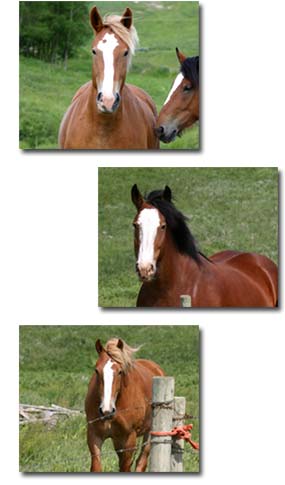Suppurative Periostitis
 This condition simply indicates that the inflammation is complicated by the presence of pus organisms. It is, therefore, a common termination of the simple acute form attending the infliction of a wound. The wound becomes contaminated, and the case of simple periostitis is soon changed into the suppurative form. Once having gained entrance to the wound, the pus increases in quantity, and slowly runs between the membrane and the bone. This, however, it does not do to any large extent, showing rather a tendency to penetrate the outer fibrous layer and gain the outside of the membrane.
This condition simply indicates that the inflammation is complicated by the presence of pus organisms. It is, therefore, a common termination of the simple acute form attending the infliction of a wound. The wound becomes contaminated, and the case of simple periostitis is soon changed into the suppurative form. Once having gained entrance to the wound, the pus increases in quantity, and slowly runs between the membrane and the bone. This, however, it does not do to any large extent, showing rather a tendency to penetrate the outer fibrous layer and gain the outside of the membrane.Suppurative periostitis is met with in foot cases, commonly in connection with punctured foot. It occurs, too, as a complication in suppurating corn, in severe tread, in complicated sand-crack, as a result of the spread of suppurative matter in acute coronitis, and in sub-horny quittor.
In ordinary cases of suppurative periostitis the pus formed is yellow in colour, creamy thick, and free from pronounced odour—the so-called 'laudable' pus of the older writers. It so happens in many cases of foot trouble, however, that putrefactive organisms gain entrance side by side with those of pus. In this case the characters of the discharge are very different. It is distinctly more fluid, is of a pink or even light chocolate colour, and extremely offensive. In these instances the pus shows a marked tendency to spread, strips the periosteum from the bone, perforates the outer layer of the membrane, and finally infiltrates the surrounding tissues.
This forms a near approach to what is known in human surgery as an infective periostitis, and in our subjects is nearly always met with in cases of severe prick. Its rapidly spreading character makes it always a dangerous condition, and a punctured foot exuding a discharge of this nature should always be regarded as serious.
The close contiguity of the joint (it can never be far distant in foot cases), the spreading character of the disease, and the rapidity with which the horse succumbs to arthritis, are all factors to be taken into consideration, and to lead to a warning-note being struck when attending a case of such kind.
A further instance of infective periostitis is that met with in acute laminitis. The discharge obtained from the sole in these cases very often bears the character we have just described, and when one considers the thinness of the keratogenous membrane, one is bound to admit that changes so grave occurring in it cannot fail to spread and infect the periosteum.